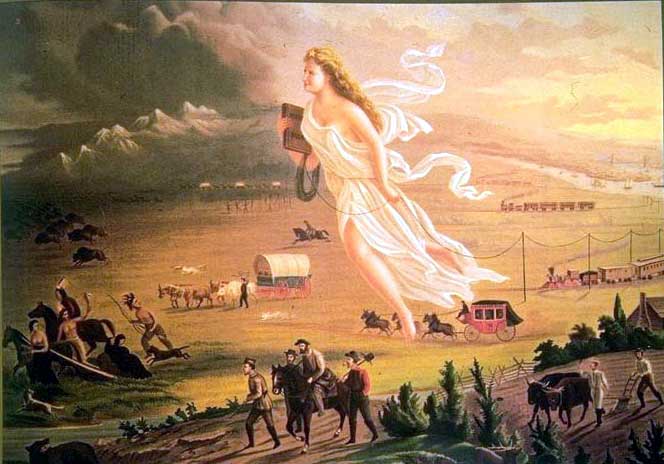John Gast'sAmerican Progress and Romanticism
 |
| John Gast's American Progress (1872) high resolution |
"In John Gast's 'American Progress,' a diaphanously and precariously clad American floats westward thru the air with the "Star of Empire" on her forehead. She has left the cities of the East behind, and the wide Mississippi, and still her course is westward. In her right hand she carries a school book, testimonial of the National Enlightenment, while with her left hand she trails the slender wires of the telegraph that will bind the nation. Fleeing her approach are Indians, buffalo, wild horses, bears, and other game, disappearing into the storm and waves of the Pacific Coast. They flee the wondrous vision - the Star 'is too much for them.'"
From a description of the Gast's painting by George Crofutt that accompanied this widely distributed painting. It has been referred to as the classic image of the doctrine of American "manifest destiny." Consider the meaning and implications of "light" and "darkness" in the Gospel of John. "American Progress" follows the tradition of Romanticism which began in Europe in the mid-19th century, exemplified in Eug�ne Delacroix's painting Liberty Leading the People (1830), Victor Hugo's play Les Misérables (1863), and the writings of James Fenimore Cooper.
|
|
| Eug�ne Delacroix's Liberty Leading the People (1830) |